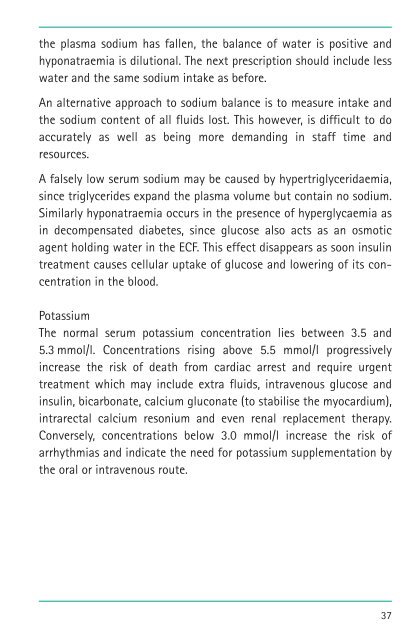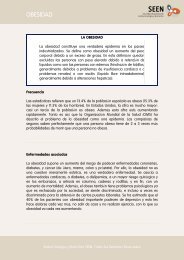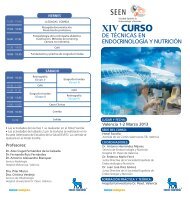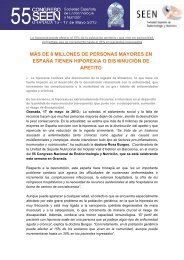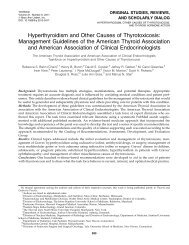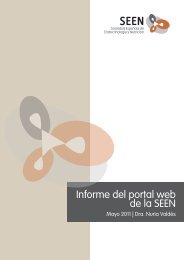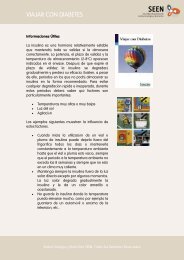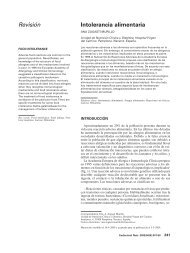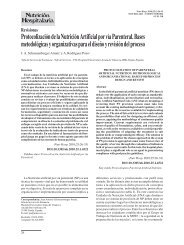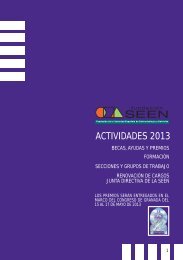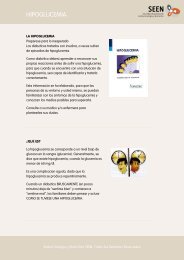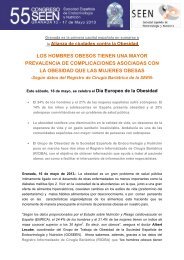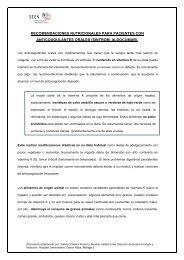Basic Concepts of Fluid and Electrolyte Therapy
Basic Concepts of Fluid and Electrolyte Therapy
Basic Concepts of Fluid and Electrolyte Therapy
Create successful ePaper yourself
Turn your PDF publications into a flip-book with our unique Google optimized e-Paper software.
the plasma sodium has fallen, the balance <strong>of</strong> water is positive <strong>and</strong><br />
hyponatraemia is dilutional. The next prescription should include less<br />
water <strong>and</strong> the same sodium intake as before.<br />
An alternative approach to sodium balance is to measure intake <strong>and</strong><br />
the sodium content <strong>of</strong> all fluids lost. This however, is difficult to do<br />
accurately as well as being more dem<strong>and</strong>ing in staff time <strong>and</strong><br />
resources.<br />
A falsely low serum sodium may be caused by hypertriglyceridaemia,<br />
since triglycerides exp<strong>and</strong> the plasma volume but contain no sodium.<br />
Similarly hyponatraemia occurs in the presence <strong>of</strong> hyperglycaemia as<br />
in decompensated diabetes, since glucose also acts as an osmotic<br />
agent holding water in the ECF. This effect disappears as soon insulin<br />
treatment causes cellular uptake <strong>of</strong> glucose <strong>and</strong> lowering <strong>of</strong> its concentration<br />
in the blood.<br />
Potassium<br />
The normal serum potassium concentration lies between 3.5 <strong>and</strong><br />
5.3 mmol/l. Concentrations rising above 5.5 mmol/l progressively<br />
increase the risk <strong>of</strong> death from cardiac arrest <strong>and</strong> require urgent<br />
treatment which may include extra fluids, intravenous glucose <strong>and</strong><br />
insulin, bicarbonate, calcium gluconate (to stabilise the myocardium),<br />
intrarectal calcium resonium <strong>and</strong> even renal replacement therapy.<br />
Conversely, concentrations below 3.0 mmol/l increase the risk <strong>of</strong><br />
arrhythmias <strong>and</strong> indicate the need for potassium supplementation by<br />
the oral or intravenous route.<br />
37


